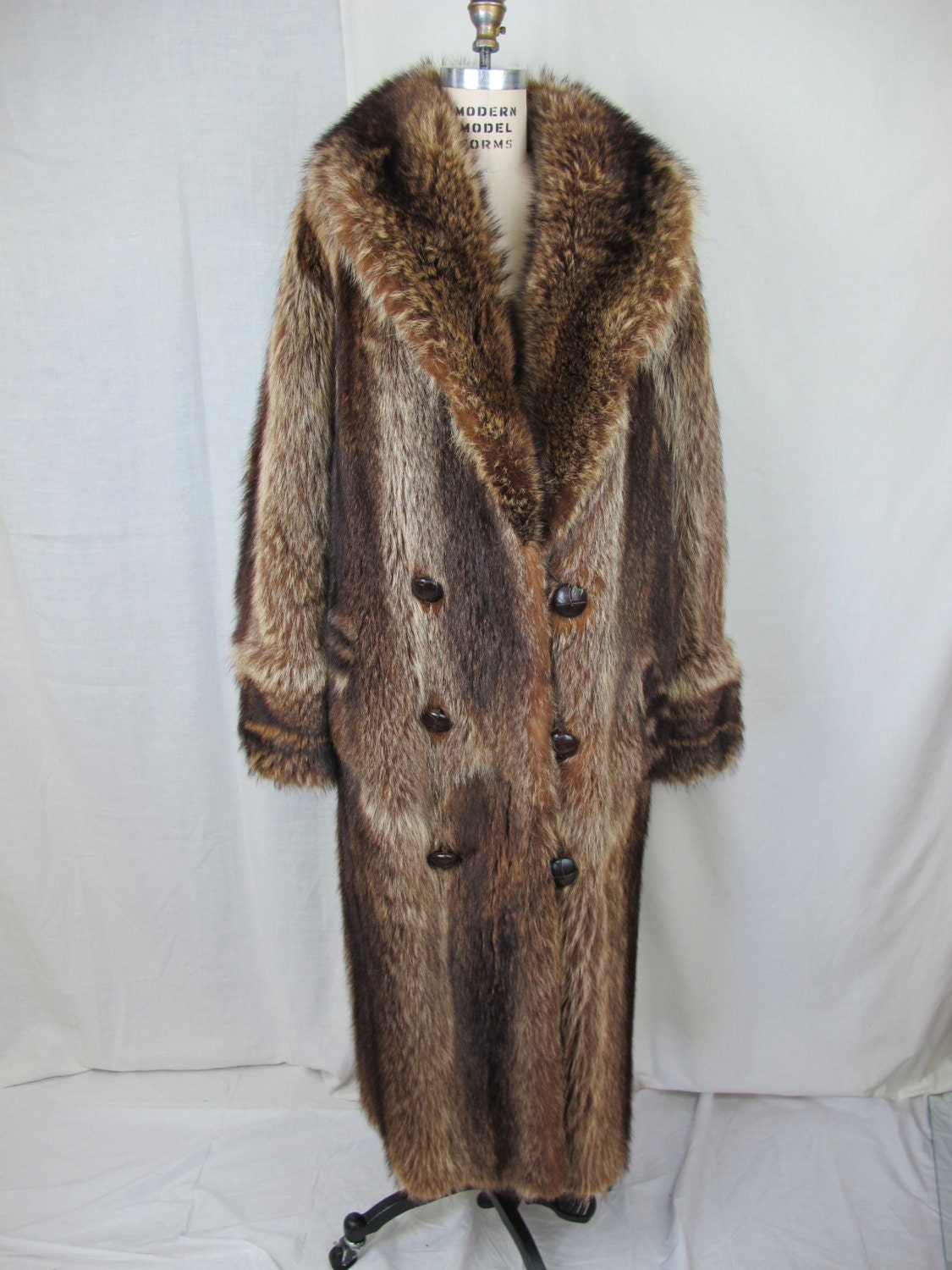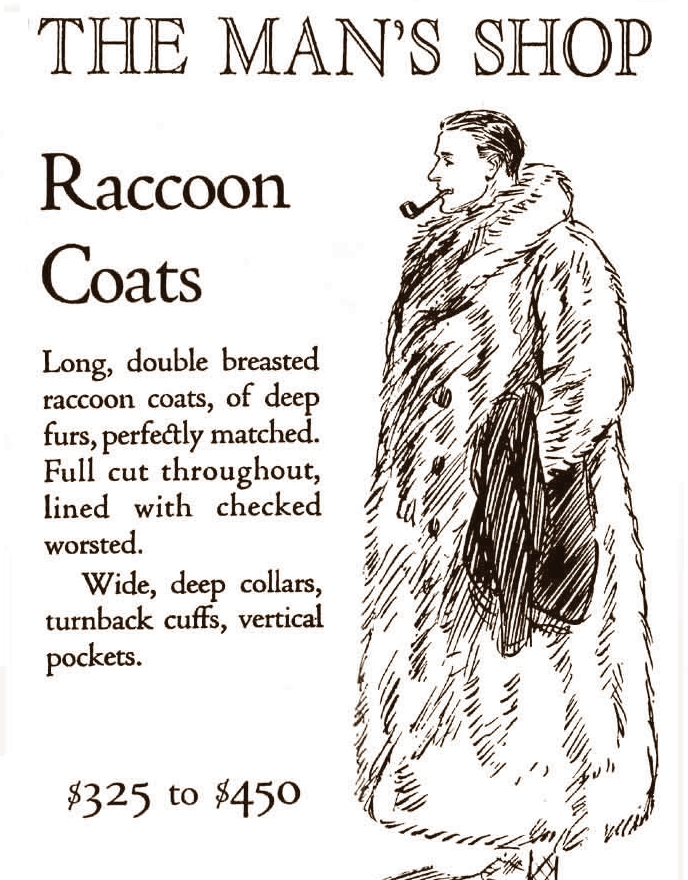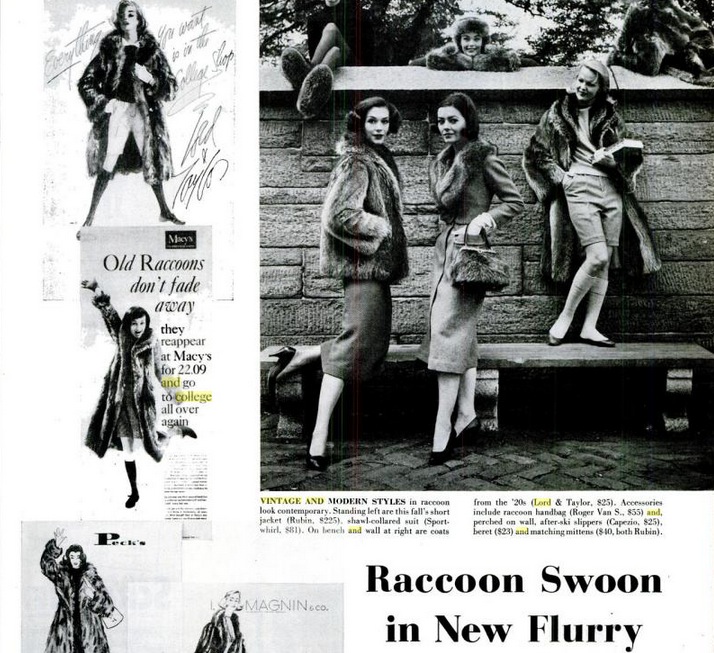
The 1920s, famously known as the Jazz Age, was a time of cultural and social revolution. This era witnessed significant changes in fashion, with the raccoon coat becoming an iconic symbol of the period. Raccoon coats were highly sought after and represented status, luxury, and a carefree spirit. Let's dive into the history and allure of the raccoon coat in the 1920s.
The Rise of the Raccoon Coat

The popularity of the raccoon coat in the 1920s can be attributed to multiple factors. With the end of World War I, a wave of optimism and economic prosperity swept the United States. The younger generation, known as flappers, rebelled against traditional norms and sought new forms of self-expression.
During this time, college students started adopting raccoon coats as a fashion statement. They were seen as a bold choice, defying convention and showcasing a rebellious spirit. The raccoon coat quickly became synonymous with the carefree, adventurous lifestyle of the Jazz Age.
The Allure of Raccoon Fur

Raccoon fur, with its distinctive markings and lush texture, captured the imagination of fashion enthusiasts. The coat's long, soft fur provided warmth and luxury, making it an ideal choice for the winter months. Raccoon fur's natural colors, ranging from silver-gray to black, added to its appeal and versatility.
Moreover, raccoon fur was relatively affordable compared to other fur options of the time, such as fox or mink. This accessibility contributed to its widespread popularity among the youth, who desired to emulate the fashion trends of the wealthy elite.
Symbol of Status and Adventure

The raccoon coat became a symbol of status and adventure during the 1920s. Owning one was a sign of wealth and affluence. It was a garment that represented the carefree spirit of the Jazz Age, as those who wore it were often associated with a life of leisure and excitement.
College students and young professionals embraced the raccoon coat as a way to rebel against their conservative upbringing. It became a statement piece, worn proudly as a rejection of societal norms. The coat's association with the roaring twenties made it an essential item for anyone wanting to be part of the fashionable elite.
Pop Culture and the Raccoon Coat

The raccoon coat's popularity soared even further with its appearance in popular culture. It became a recurring theme in literature, films, and music of the time. F. Scott Fitzgerald's iconic novel, "The Great Gatsby," featured characters donning raccoon coats, solidifying its association with the glamorous and extravagant lifestyle of the era.
Additionally, the raccoon coat was often seen in silent films and portrayed as a symbol of sophistication and elegance. Jazz musicians, such as Duke Ellington and Louis Armstrong, were frequently photographed wearing raccoon coats, further cementing its place as a fashion must-have.
The Decline of the Raccoon Coat

As the 1920s came to an end, the popularity of the raccoon coat started to wane. The Great Depression in the 1930s brought economic hardship, making extravagant displays of wealth less acceptable. Additionally, changing fashion trends shifted towards more streamlined and tailored silhouettes, leaving behind the bulky and voluminous raccoon coat.
Animal rights movements also contributed to the decline in popularity of fur coats, including the raccoon coat. The use of real fur became increasingly controversial as people started to question the ethics of wearing animal skins.
The Legacy of the Raccoon Coat

Despite its decline in popularity, the raccoon coat remains an iconic symbol of the extravagant and carefree Jazz Age. It serves as a reminder of a bygone era characterized by societal changes, artistic expression, and cultural revolution.
Today, vintage raccoon coats are sought after by collectors and fashion enthusiasts who appreciate their historical significance. They are seen as artifacts that encapsulate the spirit of the 1920s and the desire to break free from tradition.
Meta Description:
Discover the allure and cultural significance of the raccoon coat in the 1920s. Learn about its rise to fashion prominence, representation of status and adventure, and its lasting legacy in the Jazz Age.
Meta Keywords:
Raccoon coat, 1920s fashion, Jazz Age, flappers, raccoon fur, status symbol, rebellious fashion, pop culture, decline of fur coats, vintage fashion.